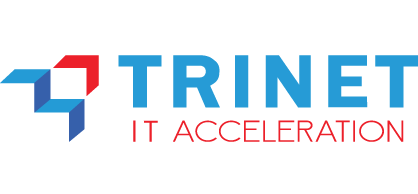Tech Innovation > DC Infrastructure > Uninterruptible Power Supply (UPS)

Uninterruptible Power Supply (UPS)
Without this solution, organizations face the following challenges:
Power Outages
Without a UPS, data centers are vulnerable to sudden power outages, causing downtime and potential data loss.
Unstable Power Supply
Without a UPS, fluctuations in power supply can damage sensitive equipment, leading to system failures and costly repairs.
Operational Disruption
Without a UPS, there is a risk of operational disruption during power loss, resulting in delays, lost productivity, and impact on customer service.

Key Features & Capabilities
UPS ensures uninterrupted power, protects equipment, and prevents downtime during outages.
Show Details
a. Backup Power Supply
- Instant Power During Outages: Provides emergency battery power during grid failures, preventing data loss or hardware damage.
- Runtime: Duration depends on battery capacity and connected load (minutes to hours).
b. Voltage Regulation
- Stabilizes Voltage Fluctuations: Protects against surges (overvoltage), sags (undervoltage), and spikes.
- Types of Voltage Regulation:
- Standby UPS: Activates only during outages (basic protection).
- Line-Interactive UPS: Adjusts voltage dynamically (e.g., boosts/bucks voltage).
- Online UPS (Double Conversion): Continuously converts AC to DC and back to AC, offering the highest protection.
c. Surge Protection
- Surge Protection: Filters electrical surges caused by lightning or grid instability, shielding connected devices from physical damage.
d. Automatic Voltage Regulation (AVR)
- AVR: Corrects minor voltage fluctuations without switching to battery, extending battery life.
e. Seamless Transition to Battery
- Near-Zero Transfer Time (≤2–10 ms): Ensures critical systems (e.g., servers, medical devices) stay operational during outages.
f. Battery Management
- Smart Charging: Monitors battery health, temperature, and charge cycles.
- Hot-Swappable Batteries: Replace batteries without shutting down the UPS (common in enterprise models).
g. Software Integration & Remote Monitoring
- Shutdown Automation: Safely powers down connected systems (e.g., servers) during prolonged outages.
- Network Management: Remote monitoring via USB, Ethernet, or SNMP for data centers and IT infrastructure.
h. Noise/EMI Filtering
- EMI Filtering: Reduces electromagnetic interference (EMI) and radio frequency noise, crucial for sensitive equipment (labs, audio systems, electronics systems).
i. User Interface & Alerts
- LCD/LED Display: Shows real-time data (load capacity, battery status, voltage).
- Audible/Visual Alarms: Warns of low battery, overload, or faults.
j. Scalability & Expandability
- External Battery Packs: Extend runtime for high-demand applications.
- Rack-Mountable Designs: Ideal for data centers or server rooms.
k. Energy Efficiency
- Eco Mode: Reduces power consumption during low-load conditions (trade-off: slightly lower protection).
- Green Technology: Minimizes heat generation and energy waste.
l. Redundancy & Parallel Operation
- N+1 Redundancy: Multiple UPS units work in parallel to ensure backup power if one fails (critical for hospitals, data centers).
m. Environmental Monitoring (Advanced Models)
- Environmental Monitoring: Tracks temperature, humidity, and air quality in server rooms, integrating with building management systems.
n. Prioritized Outlets
- Battery-Backed Outlets: Prioritize power to critical devices during outages.
- Surge-Only Outlets: Protect non-critical devices from surges without battery backup.

Business Benefits
UPS provides backup power, prevents disruptions, and ensures equipment longevity and reliability.
Show Details
a. Operational Continuity and Productivity
- Prevents Downtime: A UPS ensures continuous power during outages, allowing operations to proceed without interruption, crucial for sectors like e-commerce, healthcare, and manufacturing.
- Graceful Shutdown: Provides time to save data and shut down systems properly, preventing data corruption and hardware damage during prolonged outages.
- Remote Work Stability: Supports remote employees by maintaining productivity during local power issues, if UPS units are provided.
b. Financial Protection and Cost Savings
- Reduces Revenue Loss: Minimizes downtime-related financial impacts, such as halted sales or service interruptions.
- Lowers Equipment Costs: Protects hardware from power surges, sags, and spikes, extending lifespan and reducing repair/replacement expenses.
- Insurance and Risk Mitigation: Potentially lowers insurance premiums by mitigating risks associated with power failures.
c. Data Integrity and Security
- Prevents Data Loss: Ensures critical data is saved during outages, safeguarding against loss due to abrupt shutdowns.
- Avoids Corruption: Maintains server and database integrity, reducing recovery costs and operational delays.
d. Compliance and Reputation
- Regulatory Adherence: Meets industry-specific compliance requirements (e.g., healthcare, finance) for uptime and data protection.
- Customer Trust: Enhances reputation by delivering reliable services, fostering client loyalty and competitive advantage.
e. Power Quality and Infrastructure
- Voltage Regulation: Smooths power fluctuations, improving equipment efficiency and longevity.
- Scalability: Adapts to growing business needs, ensuring protection scales with infrastructure expansion.
f. Sector-Specific Criticality
- Healthcare: Keeps life-saving devices operational.
- Telecommunications/Data Centers: Maintains connectivity and uptime for critical infrastructure.
- Manufacturing: Prevents machinery damage and production halts.
g. Employee and Environmental Impact
- Boosts Morale: Reduces frustration from frequent outages, enhancing productivity.
- Sustainability: Extends equipment lifespan, reducing electronic waste.

Use Cases
UPS ensures continuous power across industries, protects against outages, and maintains system uptime.
Show Details
a. Data Protection & IT Infrastructure
- Servers/Data Centers: Prevents data loss by allowing safe shutdown during outages.
- Workstations/Home PCs: Provides time to save work and shut down properly.
- Network Equipment: Keeps routers, modems, and switches online during short outages.
b. Healthcare & Medical Equipment
- Life-Support Systems: Ensures continuous operation of ventilators, dialysis machines, etc.
- Diagnostic Tools: Protects MRI/CT scanners from abrupt shutdowns.
- Electronic Health Records (EHR): Maintains access to critical patient data.
c. Industrial & Manufacturing
- Process Control Systems: Allows controlled shutdown of machinery to prevent damage.
- Automated Production Lines: Avoids disruptions in manufacturing workflows.
d. Telecommunications
- Cell Towers/Data Centers: Maintains connectivity during power fluctuations.
- Emergency Communication Systems: Ensures reliability for first responders.
e. Retail & Hospitality
- Point-of-Sale (POS) Systems: Prevents transaction interruptions.
- Digital Inventory Systems: Safeguards against data corruption.
f. Security & Surveillance
- Alarm Systems/Cameras: Ensures continuous monitoring during outages.
- Access Control Systems: Maintains building security (e.g., electronic locks).
g. Residential Applications
- Home Entertainment Systems: Protects TVs, gaming consoles, and audio equipment.
- Smart Home Hubs: Keeps IoT devices (e.g., thermostats, lights) operational.
h. Education & Research
- Online Learning Platforms: Avoids disruptions during virtual classes/exams.
- Laboratory Equipment: Prevents loss of sensitive experiments.
i. Financial Services
- ATMs/Trading Systems: Ensures uninterrupted financial transactions.
- Banking Data Centers: Protects against revenue loss and data breaches.
j. Renewable Energy Integration
- Solar/Wind Hybrid Systems: Bridges gaps in renewable power generation with battery backup.
k. Entertainment & Events
- Live Sound/Lighting Systems: Prevents disruptions during performances.
- Broadcast Equipment: Ensures continuous transmission for live TV/streaming.
l. Voltage Regulation
- Areas with Unstable Grids: Smooths voltage fluctuations to protect sensitive electronics.

How It Works
Uninterruptible Power Supply (UPS) ensures continuous power, protecting systems from outages and surges.
Show Details
a. Power Input Monitoring
- Constantly monitors incoming power from the electrical grid to ensure stable and clean energy supply.
- Detects fluctuations, surges, or interruptions in power that could impact connected devices.
b. Battery Backup Activation
- When the incoming power fails or drops below acceptable levels, the UPS automatically switches to its internal battery backup.
- This allows connected devices to remain powered without interruption during short-term power outages.
c. Voltage Regulation & Stabilization
- The UPS regulates voltage levels to prevent damage to sensitive equipment from power surges or sags.
- Maintains a stable output voltage, ensuring consistent performance and longevity of connected devices.
d. Battery Management & Charging
- The UPS monitors the health of its batteries to ensure they remain fully charged and ready to provide backup power.
- Uses smart charging algorithms to extend battery life and prevent overcharging, ensuring optimal performance.
e. Real-Time Monitoring & Alerts
- The UPS system provides real-time monitoring of power status, battery health, and performance metrics.
- It sends alerts and notifications to the system administrator if there are issues with power input or battery health.
f. Automatic Shutdown & System Protection
- If a power outage extends beyond the UPS's battery capacity, it can initiate a graceful system shutdown of connected devices to prevent data loss or hardware damage.
- The system ensures that all critical processes and files are properly saved before shutdown to avoid corruption.
g. Load Capacity Management
- The UPS system intelligently manages the load, distributing power efficiently across connected devices based on their energy requirements.
- This helps to ensure that the system doesn't overload, preventing unnecessary shutdowns or damage.
h. Efficiency Optimization
- The UPS operates with high efficiency, converting power with minimal losses to reduce electricity consumption.
- It helps reduce energy costs by minimizing the amount of energy wasted during power conversion.
i. Scalability & Integration
- The UPS is scalable and can be integrated into larger systems, with additional units added to handle higher power requirements.
- It ensures uninterrupted power for various sizes of infrastructures, from small offices to large data centers.
j. System Diagnostics & Maintenance
- Regular diagnostics are performed to check the status of the UPS components and ensure they are functioning optimally.
- Maintenance recommendations are provided based on the system's performance, helping prevent failures and extend its lifespan.
k. Emergency Power Supply Activation
- During power outages or grid failures, the UPS automatically activates its battery supply to maintain the continuity of operations.
- The battery is automatically recharged when normal power is restored, ensuring readiness for the next outage.
l. Protection from Power Surges & Spikes
- The UPS provides surge protection to shield connected equipment from high voltage spikes that can cause irreparable damage.
- It helps to extend the lifespan of sensitive devices such as computers, servers, and networking equipment.
Contact our experts for further information












